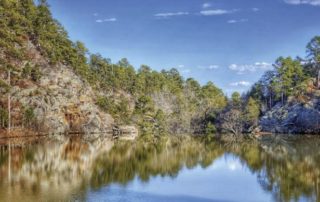High Points Part 12: The Ticks Win Again!
This is the Twelfth episode of my trips to visit as many of the fifty US States' highest points. In chapter eleven we looked at the trip I took in August of 2020 to Idaho and Nevada. This time it's a coast-to-coast endeavor to bag Maine and California in the summer of 2021. The goal for this year was to make a second run at Katahdin, Maine and then six weeks later to backpack on the John Muir Trail with Mt. Whitney, California as the highlight of that hike. Both trips were advertised as trips for the Ozark Society and required a lot of permit applications and logistics to pull them off. There was also a lot of physical conditioning required as both peaks would present challenges. By mid-May, most of the planning and prep had been done, so it was time to concentrate on trip one, Katahdin, in the Baxter State Park of Maine. Maine In Episode Eight I recalled my trip to the North Eastern states in September 2018. Among the peaks I attempted was Katahdin, Maine. It was a tough hike and I had to turn back because I ran out of time to make it safely [...]

